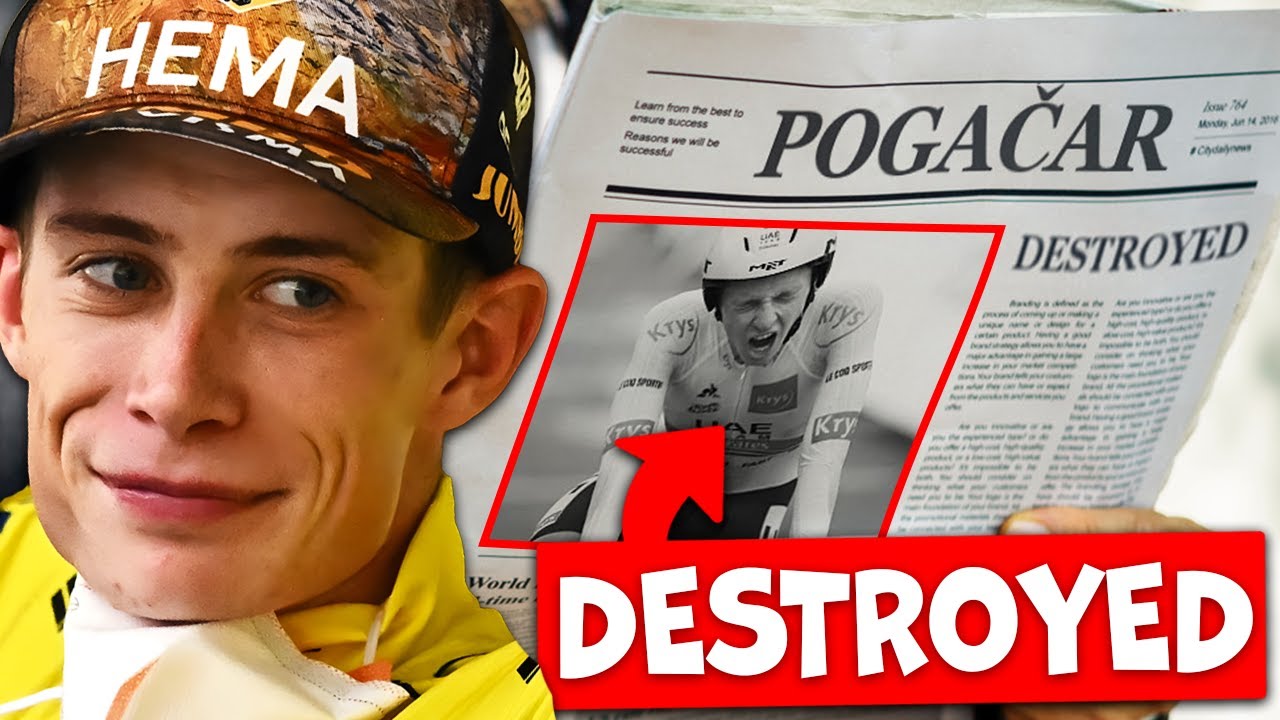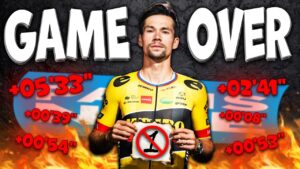Jonas Vingegaard’s TRAINING To DESTROY Tadej Pogačar with Watts
Source: Watts Youtube Channel: Jonas Vingegaard’s TRAINING To DESTROY Tadej Pogačar
Video Jonas Vingegaard’s TRAINING To DESTROY Tadej Pogačar with Watts Youtube Channel
Video Jonas Vingegaard’s TRAINING To DESTROY Tadej Pogačar with Watts YouTube Channel.
Jonas Vingegaard’s TRAINING To DESTROY Tadej Pogačar | Watts
Jonas Vingegaard: The Man Who Conquered Tour de France
This year’s Tour de France was a thrilling ride for fans of cycling. It became evident that Jonas Vingegaard, the Danish cyclist, emerged as the strongest rider, especially after his exceptional time trial performance that dashed Tadej Pogačar’s hopes of claiming the yellow jersey for the season. But what does it take to outshine a formidable opponent like Pogačar, and what kind of training did Vingegaard undergo to achieve this momentous victory?
The Principles of Vingegaard’s Training
Contrary to what one might expect, the principles of Vingegaard’s training were simple yet incredibly effective. According to the head of performance at Jumbo-Visma, the team focused on three main aspects to prepare Jonas for the challenge: consistency, understanding the opponent, and training strengths rather than weaknesses.
The Element of Availability
In addition to these fundamental principles, the team focused on ensuring that Jonas remained healthy and fit throughout the season. This meant carefully managing his racing calendar and providing ample rest to keep him in peak condition for crucial races.
With a comprehensive dataset that included key stages where Jonas had previously outperformed Pogačar, the team had the knowledge and insights needed to replicate those successes and establish a winning strategy for the season.
Playing to Strengths
One notable aspect of Vingegaard’s training was the focus on his strengths rather than his weaknesses. Unlike altering his training plan to match Pogačar’s accelerations, the team emphasized developing Vingegaard’s prowess on long climbs, which ultimately proved to be the key to his victory.
Understanding that Pogačar’s explosiveness was counter to Vingegaard’s endurance on climbs, the team balanced his training to optimize his performance in both areas while leveraging his strengths in mountainous terrain.
Vuelta a Espana: A New Challenge
Following his triumph at the Tour de France, Vingegaard faced a new challenge at the Vuelta a Espana. With a focus on his skills as a climber, he was able to secure an impressive victory, showcasing his ability to excel in mountainous stages, where his strengths were truly noticeable.
While the team had minimal data to inform their approach to racing against competitors like Remco Evenepoel, they leveraged previous experience to create a winning strategy. This adaptive approach paid off, leading to Vingegaard’s success at the Vuelta.
Consistency Is Key
One critical factor that contributed to Vingegaard’s success was his consistent training approach. Despite a whirlwind turnaround between races, including taking time off to rest and recover, his commitment to training consistency allowed him to secure the yellow jersey at the Tour de France and seamlessly transition to the Vuelta a Espana.
The Impact of Limited Racing
Interestingly, Vingegaard’s relatively limited racing schedule before the Tour de France proved to be advantageous. By carefully managing his race days, the team ensured he could undertake focused and targeted training, which ultimately led to his commanding victory in Paris.
Overcoming Past Challenges
Moreover, Vingegaard’s training was a deliberate effort to address previous setbacks, such as tendon issues and the impact of COVID-19. By prioritizing his physical preparedness and ensuring that all aspects of his training, recovery, and nutrition were meticulously managed, the team aimed to eliminate potential factors that could impede his performance.
Redefining Success: Looking Towards the Future
As a result of his remarkable consistency and strategic training, the cycling community has begun to draw comparisons between Vingegaard and the likes of Chris Froome, hinting at the potential for similar victories in the future. With the blueprint for success established, Jumbo-Visma and Jonas Vingegaard are poised to continue their winning streak in the upcoming seasons.
In summary, Jonas Vingegaard’s triumph at the Tour de France and subsequent success at the Vuelta a Espana are a testament to the power of strategic and purposeful training, emphasizing strengths, and the importance of consistency in achieving extraordinary athletic feats. As he continues to make his mark on the world of cycling, Vingegaard has laid the groundwork for a future filled with even greater triumphs and victories.
The opinions expressed in this space are the sole responsibility of the YouTube Channel Watts and do not necessarily represent the views of CicloNews.










